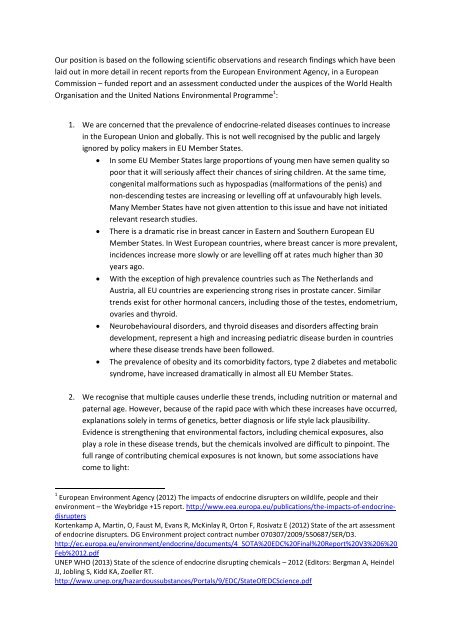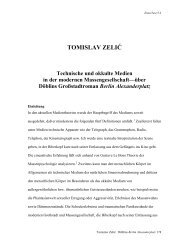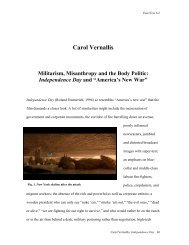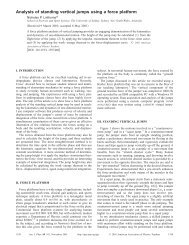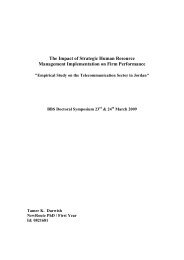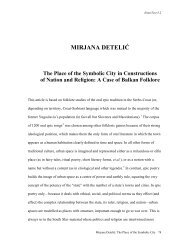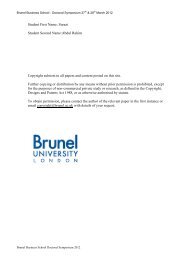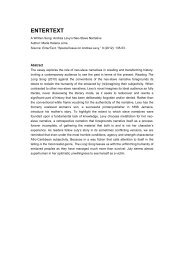The 2013 Berlaymont Declaration on Endocrine ... - Brunel University
The 2013 Berlaymont Declaration on Endocrine ... - Brunel University
The 2013 Berlaymont Declaration on Endocrine ... - Brunel University
Create successful ePaper yourself
Turn your PDF publications into a flip-book with our unique Google optimized e-Paper software.
Our positi<strong>on</strong> is based <strong>on</strong> the following scientific observati<strong>on</strong>s and research findings which have been<br />
laid out in more detail in recent reports from the European Envir<strong>on</strong>ment Agency, in a European<br />
Commissi<strong>on</strong> – funded report and an assessment c<strong>on</strong>ducted under the auspices of the World Health<br />
Organisati<strong>on</strong> and the United Nati<strong>on</strong>s Envir<strong>on</strong>mental Programme 1 :<br />
1. We are c<strong>on</strong>cerned that the prevalence of endocrine-related diseases c<strong>on</strong>tinues to increase<br />
in the European Uni<strong>on</strong> and globally. This is not well recognised by the public and largely<br />
ignored by policy makers in EU Member States.<br />
In some EU Member States large proporti<strong>on</strong>s of young men have semen quality so<br />
poor that it will seriously affect their chances of siring children. At the same time,<br />
c<strong>on</strong>genital malformati<strong>on</strong>s such as hypospadias (malformati<strong>on</strong>s of the penis) and<br />
n<strong>on</strong>-descending testes are increasing or levelling off at unfavourably high levels.<br />
Many Member States have not given attenti<strong>on</strong> to this issue and have not initiated<br />
relevant research studies.<br />
<str<strong>on</strong>g>The</str<strong>on</strong>g>re is a dramatic rise in breast cancer in Eastern and Southern European EU<br />
Member States. In West European countries, where breast cancer is more prevalent,<br />
incidences increase more slowly or are levelling off at rates much higher than 30<br />
years ago.<br />
With the excepti<strong>on</strong> of high prevalence countries such as <str<strong>on</strong>g>The</str<strong>on</strong>g> Netherlands and<br />
Austria, all EU countries are experiencing str<strong>on</strong>g rises in prostate cancer. Similar<br />
trends exist for other horm<strong>on</strong>al cancers, including those of the testes, endometrium,<br />
ovaries and thyroid.<br />
Neurobehavioural disorders, and thyroid diseases and disorders affecting brain<br />
development, represent a high and increasing pediatric disease burden in countries<br />
where these disease trends have been followed.<br />
<str<strong>on</strong>g>The</str<strong>on</strong>g> prevalence of obesity and its comorbidity factors, type 2 diabetes and metabolic<br />
syndrome, have increased dramatically in almost all EU Member States.<br />
2. We recognise that multiple causes underlie these trends, including nutriti<strong>on</strong> or maternal and<br />
paternal age. However, because of the rapid pace with which these increases have occurred,<br />
explanati<strong>on</strong>s solely in terms of genetics, better diagnosis or life style lack plausibility.<br />
Evidence is strengthening that envir<strong>on</strong>mental factors, including chemical exposures, also<br />
play a role in these disease trends, but the chemicals involved are difficult to pinpoint. <str<strong>on</strong>g>The</str<strong>on</strong>g><br />
full range of c<strong>on</strong>tributing chemical exposures is not known, but some associati<strong>on</strong>s have<br />
come to light:<br />
1 European Envir<strong>on</strong>ment Agency (2012) <str<strong>on</strong>g>The</str<strong>on</strong>g> impacts of endocrine disrupters <strong>on</strong> wildlife, people and their<br />
envir<strong>on</strong>ment – the Weybridge +15 report. http://www.eea.europa.eu/publicati<strong>on</strong>s/the-impacts-of-endocrinedisrupters<br />
Kortenkamp A, Martin, O, Faust M, Evans R, McKinlay R, Ort<strong>on</strong> F, Rosivatz E (2012) State of the art assessment<br />
of endocrine disrupters. DG Envir<strong>on</strong>ment project c<strong>on</strong>tract number 070307/2009/550687/SER/D3.<br />
http://ec.europa.eu/envir<strong>on</strong>ment/endocrine/documents/4_SOTA%20EDC%20Final%20Report%20V3%206%20<br />
Feb%2012.pdf<br />
UNEP WHO (<str<strong>on</strong>g>2013</str<strong>on</strong>g>) State of the science of endocrine disrupting chemicals – 2012 (Editors: Bergman A, Heindel<br />
JJ, Jobling S, Kidd KA, Zoeller RT.<br />
http://www.unep.org/hazardoussubstances/Portals/9/EDC/StateOfEDCScience.pdf


